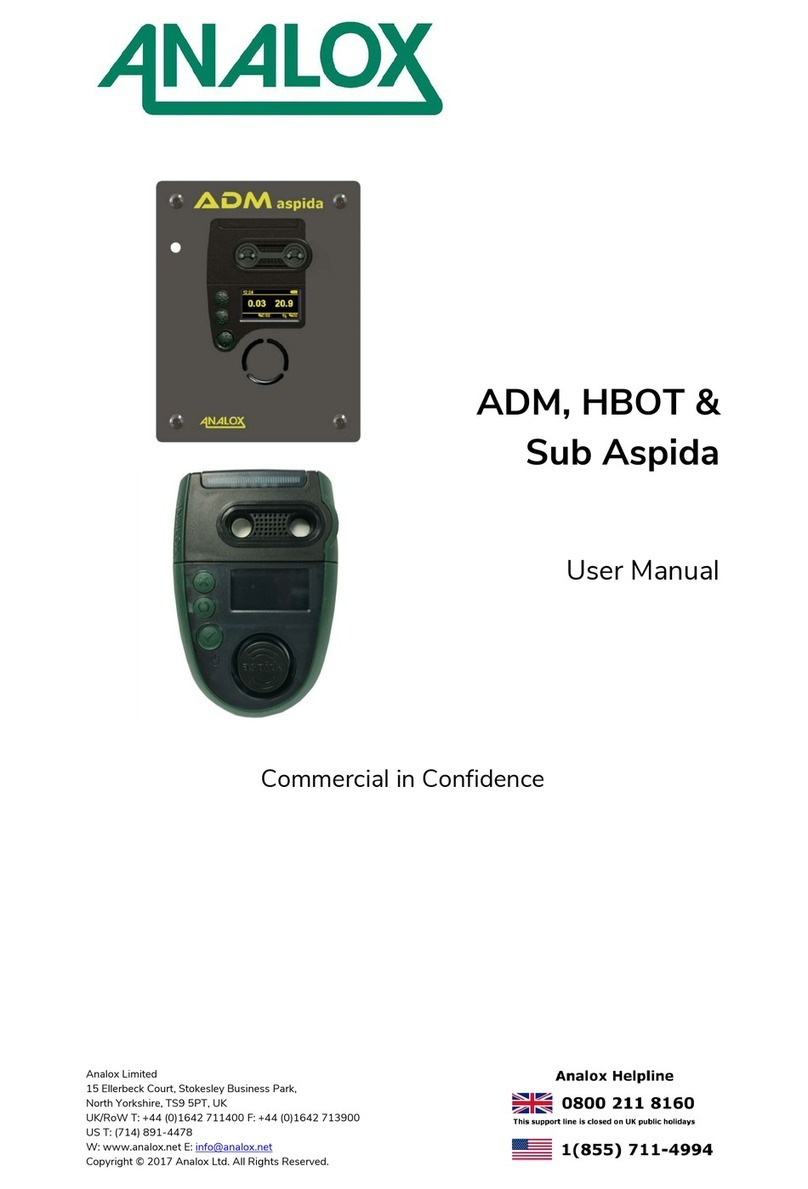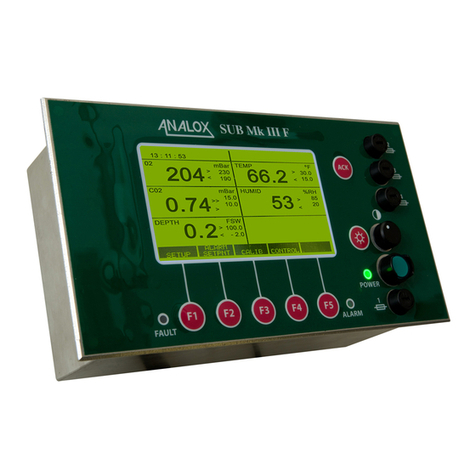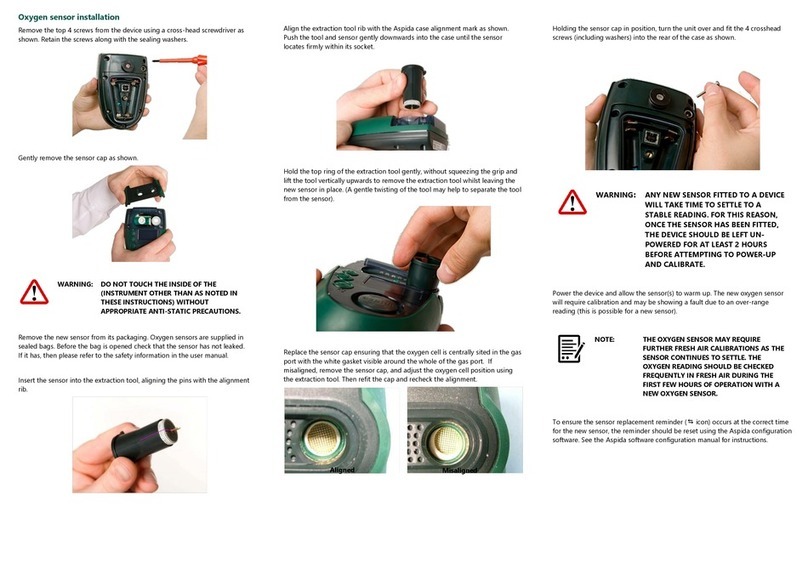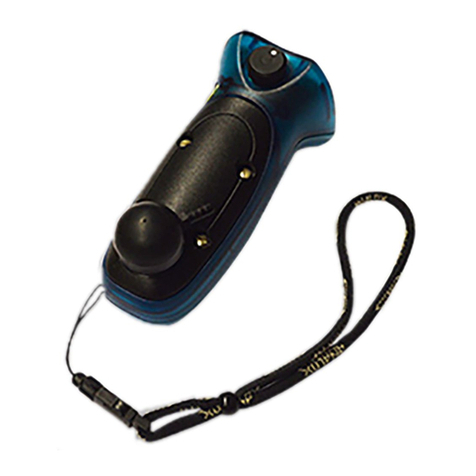ACG+
User Manual Int. Approved
Document ref: P0149-801-22 July 2022 Page 3 of 102
Copyright © 2014 Analox Ltd. All Rights Reserved.
Commercial in Confidence
Table of Contents
1Contents checklist ........................................................... 8
1.1 Standard contents.......................................................................................8
1.2 Optional accessories....................................................................................8
2Safety information ........................................................... 9
2.1 Capabilities to test gases against the EN 12021:2014 standard ........................9
2.2 Electrochemical sensors (oxygen and carbon monoxide) ..................................9
2.3 PID lamp cleaning kit ................................................................................ 10
2.4 Inlet pressure & flow ................................................................................. 10
3Introduction .................................................................. 11
3.1 ACG+ overview ........................................................................................ 11
4Installation details......................................................... 13
4.1 Mechanical overview ................................................................................. 13
4.2 Gas sample connection (Both fixed and portable versions) ............................. 14
4.3 Installation (Portable)................................................................................ 15
4.4 Installation (Fixed).................................................................................... 17
4.5 Safety interlock relay (ACG+ Fixed) ............................................................ 20
4.6 Safety interlock override key-switch (ACG+ Fixed)........................................ 21
4.7 Switched 24V DC outputs (ACG+ Fixed) ...................................................... 22
5Operating instructions ................................................... 23
5.1 Start-up .................................................................................................. 23
5.2 Controls................................................................................................... 24
5.3 Inlet/purge valve ...................................................................................... 25
5.4 Display .................................................................................................... 26
5.5 Menu....................................................................................................... 27
5.6 Adjusting the backlight .............................................................................. 28
5.7 Power sub-menu....................................................................................... 29
5.8 System flow ............................................................................................. 29
5.9 Sensor readings........................................................................................ 30
5.10 Alarms..................................................................................................... 32
5.11 Clearing alarms and hysteresis ................................................................... 33
5.12 Calibration adjustment .............................................................................. 37
5.13 Viewing device information ........................................................................ 44
5.14 Viewing sensor information ........................................................................ 44
5.15 Data-logging ............................................................................................ 45
5.16 Sensor replacement reminder..................................................................... 48
5.17 Timed sample draw ................................................................................... 49
5.18 Setting the date and time .......................................................................... 53
6Configuration................................................................. 54
6.1 Software installation.................................................................................. 54
6.2 Making a connection.................................................................................. 57
6.3 Changing options ...................................................................................... 59
6.4 Downloading data-logs .............................................................................. 60
6.5 Setting the time........................................................................................ 61
7Networking .................................................................... 62
7.1 Overview ................................................................................................. 62
7.2 Connection............................................................................................... 62
7.3 Transmission method ................................................................................ 62
7.4 Setting the ACG Static IP Address ............................................................... 63
7.5 Retrieving Data using TCP/IP Requests ........................................................ 63
7.6 Retrieving Data using UDP ......................................................................... 64
7.7 Datagram Structure .................................................................................. 64
8Troubleshooting............................................................. 70
8.1 System faults ........................................................................................... 70
9Recommended spares and accessories .......................... 75





































